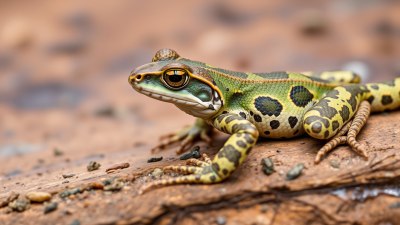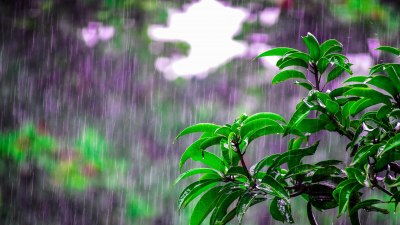Learning to Identify Local Reptiles and Amphibians on Safaris
Explore the captivating world of reptiles and amphibians you can identify on safari. Enhance your wildlife experience!

Image created with Flux Schnell
Embarking on a safari often entails witnessing the majesty of large mammals, such as elephants and lions. However, many adventurers overlook the fascinating world of reptiles and amphibians that coexist in these habitats. Understanding and identifying these creatures can enrich the safari experience and ignite a passion for wildlife conservation. This article delves into the ways to identify local reptiles and amphibians during safaris and enhances your connection with nature.
The Importance of Reptiles and Amphibians
Reptiles and amphibians play a vital role in their ecosystems. As both predators and prey, they contribute to maintaining healthy food webs. Reptiles, such as snakes and lizards, help control pest populations, while amphibians, including frogs and toads, are crucial indicators of environmental health. Their permeable skin makes them sensitive to pollution, providing insight into ecosystem integrity and serving as a warning sign for potential problems.
Understanding Local Species
Before embarking on a safari, it’s essential to familiarize yourself with the local fauna. Reptiles and amphibians can vary significantly from one region to another, and understanding the specific species in the area will enhance your ability to identify them during your journey. You can research local guides, field guides, and wildlife apps to gain knowledge about key characteristics, habitats, and behaviors.
Common Reptiles to Identify
Several reptiles can often be spotted during a safari:
- Chameleons: Known for their color-changing abilities, chameleons can camouflage themselves by blending in with foliage. Look for their distinctive zygodactylous feet and elongated tongues.
- Geckos: These nocturnal lizards are often recognized by their unique vocalizations and sticky toe pads that allow them to climb vertical surfaces. They can be colorful and are found in various habitats.
- Snakes: From hissing cobras to non-venomous pythons, snakes are abundant in many regions. Key identifiers include head shape, body patterns, and movement patterns. Remember to maintain a safe distance!
Common Amphibians to Identify
As for amphibians, several species are commonly seen on safari:
- Frogs: Frogs are often heard before they are seen. Their croaks and calls can vary significantly by species. Look for the differences in coloration and size; some even change colors based on environmental factors.
- Toads: Characterized by dry, bumpy skin and a stocky body, toads tend to inhabit terrestrial environments. They often have a more robust appearance compared to frogs and have better adaptations for dry conditions.
- Newts and Salamanders: Depending on the ecosystem, you may spot these stunning creatures near wetlands. Both have moist, smooth skin and exhibit fascinating behaviors during their mating season, often including elaborate displays.
Safari Etiquette for Wildlife Viewing
When observing reptiles and amphibians, it’s crucial to adhere to wildlife viewing etiquette:
- Keep a Respectful Distance: Approach any reptile or amphibian cautiously. Many can be startled easily, so it is essential to maintain a respectful distance to avoid alarming them.
- Do Not Disturb: Avoid touching or moving the creatures you encounter. Reptiles and amphibians can be sensitive and may suffer from stress if handled.
- Stick to Designated Paths: Following marked trails and dirt paths helps minimize your impact on their habitats. It also allows for easier spotting as wildlife is more likely to be found within these designated areas.
Using Field Guides and Technology
Equipping yourself with field guides or smartphone apps designed for wildlife identification can significantly enhance your safari experience. Field guides offer invaluable information on local species, often including photos and drawings for comparison. Smartphone apps may provide audio clips of animal calls, helpful in identifying amphibians known for their vocalizations.
Keeping a Wildlife Journal
A wildlife journal is an excellent way to document your encounters with reptiles and amphibians. Include details such as location, time, species identification, and any significant behaviors observed. Recording these observations not only enhances your learning experience but also contributes to personal enjoyment and appreciation of nature.
Join Guided Tours or Wildlife Workshops
To enhance your understanding of reptile and amphibian identification, consider joining guided tours or wildlife workshops focused on herpetology, the study of reptiles and amphibians. Expert guides can share their insights and experiences, making learning engaging and interactive. They can also help with identification and offer tips on how to interact responsibly with these creatures.
Conservation Efforts and Responsible Wildlife Tourism
Understanding and identifying reptiles and amphibians also comes with the responsibility of advocating for their conservation. Many species face threats, including habitat loss, climate change, and pollution. As a safari enthusiast, it’s essential to support conservation tourism efforts, such as visiting parks and reserves that prioritize the protection of wildlife and their habitats.
Documenting Your Experience
Photography can be a beautiful way to document your adventures during safari. Capture images of reptiles and amphibians while ensuring you do so respectfully. Use a zoom lens to keep your distance and avoid using flash, as it can disturb the animals. Sharing your findings with fellow enthusiasts can spark conversations about conservation challenges and successes.
Participating in Citizen Science
Engaging in citizen science initiatives can further enhance your contribution to reptile and amphibian conservation. Many projects collect data on local populations, monitor habitats, and involve the public in research efforts. Participating offers a deeper understanding of the ecological importance of these animals and fosters a sense of community among nature enthusiasts.
In conclusion, learning to identify local reptiles and amphibians while on safari is not only an exciting endeavor but also a way to connect with the natural world on a deeper level. By recognizing their ecological significance, observing them responsibly, and advocating for their conservation, you contribute to the preservation of these remarkable species. So, the next time you’re on safari, keep an eye out for the often-overlooked reptiles and amphibians, and expand your wildlife experience beyond the large mammals!











